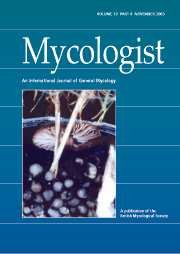Article contents
Mycotoxin review 3: Houses and pastures
Published online by Cambridge University Press: 03 December 2003
Abstract
The two previous parts to this review have emphasised the relatively small number of mould toxins, associated with the mould genera Penicillium, Aspergillus and Fusarium, which may have the greatest impact in the context of human foods. There are, however, a large number of toxic mould metabolites, produced by a diverse range of other mould genera, with an extraordinary diversity of chemical structure and biological activity. The chemical structures are fascinating and worth studying because they provide clues about biosynthetic pathways and possible biological activity. The moulds producing them occur in a wide range of ecological niches from endophytes, obligate plant pathogens to saprophytes. This diversity will be explored from two points of view – damp houses and animal pastures.
- Type
- Original Article
- Information
- Copyright
- © 2003 Cambridge University Press
- 1
- Cited by




